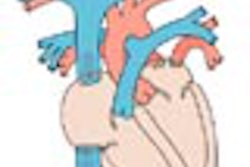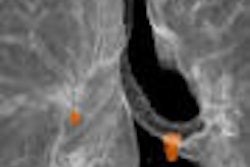You've heard of companies that offer teleradiology outsourcing services, but what about outsourcing 3D image processing? A new company called 3DR is hoping to carve out a new business model by providing a centralized location to which imaging facilities can send their 3D studies to be processed.
3DR, of Louisville, KY, is starting to ramp up its public profile and is beginning to market its services to hospitals and imaging centers. The firm has set up a centralized 3D lab in Louisville with high-speed Internet connections, and is raising funds from venture capital firms to support its expansion.
The premise behind 3DR's business model is simple: 3D volumetric imaging is a vital technology for enabling radiologists to cope with the massive volumes of data being produced by multislice CT and other technologies. But many imaging facilities may not be ready to dive into 3D due to its costs and potential impact on departmental workflow. The company hopes to ease the transition by enabling imaging facilities to contract out their 3D processing work to 3DR's lab, which then sends the studies back to the facility for final review.
The genesis for 3DR came from Dr. Robert Falk, a radiologist at Jewish Hospital in Louisville. Jewish Hospital made early investments in 3D but found the technology to be an impediment to workflow.
"We had a Ferrari of a CT but we couldn't get the studies read because we couldn't get them into the PACS because the 3D wasn't done," Falk said. "It also demanded a lot more of our techs than we thought it would."
Falk's frustration grew into a business model when he met Michael Lillig, who at the time was running a business incubator funded by the state of Kentucky that had the goal of creating a life sciences industry in the Louisville area. Lillig saw parallels between the nascent 3D industry and his own experiences in the blood diagnostics industry, in which healthcare facilities routinely send blood samples to central labs for processing. 3DR graduated from the incubator earlier this year, with Lillig assuming the mantle of CEO and Falk being named chairman and chief medical officer.
While a centralized 3D lab is a great idea in theory, it's one thing to move massive volumes of 2D data around an imaging department for volumetric processing and another thing entirely to send that data across the country. A key to 3DR's business model is a communication environment based on software algorithms from PACS technology developer Neurostar Solutions of Atlanta that enables the company to move encrypted data over the Internet extremely quickly, Lillig said.
Once the data arrives at 3DR's lab, the company's team of technologists will process the data according to the facility's specifications. In addition to helping its clients save on RT labor costs, 3DR will provide a standardized environment in which all 3D studies are processed using consistent protocols. The company is using the same kinds of standard commercial 3D processing programs that are available to end users, and can process data from modality scanners from any vendor.
In order to provide a steady stream of 3D RTs to staff the lab, 3DR has partnered with Jefferson Community College of Louisville to set up the first dedicated educational program for 3D technologists in the U.S. Eight students will start at Jefferson in the fall, with a one-year certificate program and a two-year associate's degree available.
Lillig estimates that 3DR will provide 24-hour turnaround for most 3D studies, which he estimates will be 80% of the company's workload. Stat studies will be provided with a one- to two-hour turnaround.
The company also recognizes the power of 3D as a marketing tool for its potential clients, and to that end will use Neurostar software to enable a 3DR customer to make its volume-rendered images available to its referring physicians using a Web-based system, Lillig said.
"You can go to referring doctors and you can tell them you can do 3D renderings, whereas before you never could," Lillig said. "Once you move into the outsourcing model, all of a sudden you realize the opportunity of 3D in medicine and its power for patient education."
Lillig sees several paths that potential 3DR customers could use in licensing the company's technology. Smaller imaging facilities could rely on it as their sole 3D solution on an ongoing basis, while others might use 3DR's services to get their feet wet in the technology on their way to buying 3D software to use in-house. Or, a healthcare delivery network could create its own in-house 3D lab and use 3DR's services for satellite facilities where demand for volumetric imaging isn't as high.
3DR is currently providing services to a handful of clients, and plans a major marketing and educational program to begin in the fall. The firm is planning a second round of financing in the next 60 days.
By Brian Casey
AuntMinnie.com staff writer
July 1, 2005
Related Reading
How to find and train a 3D technologist, June 17, 2005
Integrated 2D/3D offers workflow, clinical gains, June 17, 2005
3D: Rendering a new era, May 2, 2005
3D and the future of imaging, November 3, 2003
Copyright © 2005 AuntMinnie.com



















